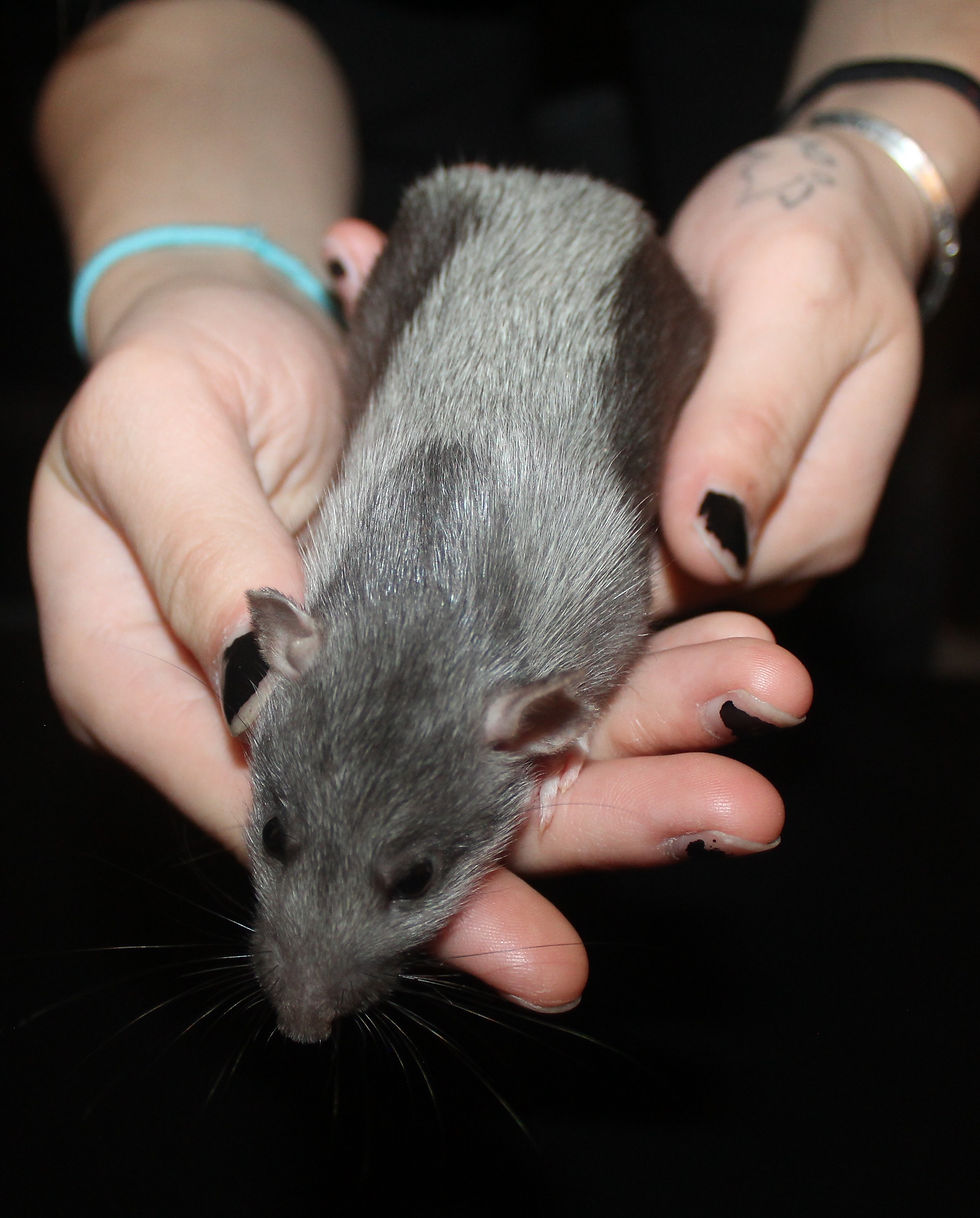How to Understand URI in Pets and Determine if Your Rat Needs Veterinary Care
- StormHaven Rattery

- Jun 10
- 3 min read
Updated: Aug 29

When it comes to our pets, especially small furry creatures like rats, understanding their health issues can be overwhelming. A common yet serious health concern for these animals is a URI, or Upper Respiratory Infection. This blog post will discuss what a URI is, whether your rat might have one, and when to seek veterinary care.
What is a URI?
A URI, or Upper Respiratory Infection, is an infection that affects the upper parts of the respiratory tract, including the nose, throat, and sinuses. In rats, URIs can be caused by various pathogens, including bacteria, viruses, and environmental factors.
URIs in rats are not uncommon and can manifest through various symptoms. These can include sneezing, nasal discharge, wheezing, coughing, and difficulty breathing. If ignored, URIs can lead to more serious conditions like pneumonia. Therefore, it is crucial to recognize the signs early.
Symptoms of URI in Rats
Recognizing the symptoms of a URI is essential for timely intervention. Here are some common signs to look out for:
Sneezing: Frequent sneezing can be one of the first indicators of an upper respiratory infection.
Nasal Discharge: This can vary from clear to cloudy or even purulent in appearance.
Coughing: While rats do not cough as frequently as humans, a persistent cough should not be ignored.
Wheezing: A wheezing sound during breathing is a sign that your rat's airways may be constricted.
Lethargy: If your rat seems unusually inactive or less engaged, it could be a sign of illness.
If you observe any of these symptoms, you should take them seriously and consider the next steps.
Does My Rat Have a URI?
To determine if your rat has a URI, you should conduct a preliminary assessment at home. Here's what to consider:
Monitor Behavior: Take note of your rat's activity levels. Is it more withdrawn than usual?
Inspect Their Environment: Sometimes, poor air quality or exposure to irritants (like cigarette smoke or strong scents) can trigger a URI.
Check Their Nose and Breathing: Observe whether there is any nasal discharge and listen to your rat's breathing patterns.
Assess Eating and Drinking Habits: A sick rat might not eat or drink as well, which can lead to dehydration.
If your rat shows multiple symptoms or sudden changes in behavior, it is wise to consult a veterinarian.
When to Seek Veterinary Care
Determining when to seek professional help can be challenging. Generally, if you notice any of the following, it's time to consult a vet:
Persistent Symptoms: If your rat has symptoms that last more than a day or two, seek veterinary help.
Difficulty Breathing: If your rat appears to be struggling to breathe, this is a medical emergency.
Severe Lethargy: A significant decrease in energy or activity level should raise concerns.
Poor Appetite: If your rat is refusing food or water for more than 24 hours, it is crucial to get veterinary advice.
Remember, while it might feel tempting to manage the situation at home or look for home remedies, it’s always best to err on the side of caution when it comes to your pet's health.
URI Care at Home vs. Veterinary Intervention
Once you've determined that your rat may have a URI, you might wonder whether you can manage it at home or if a vet visit is necessary. Here's a breakdown of what you can do at home and when to get help:
Home Care Tips
Humidity and Ventilation: Ensure your rat's environment is clean, well-ventilated, and has appropriate humidity levels. A humidifier may help ease respiratory issues.
Nutritional Support: Offer nutritious foods and plenty of hydration to support your rat's immune system.
Observational Monitoring: Keep an eye on your rat's symptoms. Documenting any changes can be helpful for your vet.
When to Visit the Vet
If symptoms worsen or do not improve with home care, professional veterinary treatment is essential.
Your vet may prescribe antibiotics or other medications if the URI is bacterial in nature.
Regular check-ups are also vital for health monitoring without visible symptoms.
Being proactive about your rat’s health can significantly improve outcomes.
Conclusion
Understanding URIs in your pet rat is crucial for early detection and treatment. By recognizing symptoms and knowing when to seek veterinary care, you can ensure your furry friend remains healthy. Always prioritize their well-being and do not hesitate to reach out to a veterinarian if you have any concerns. Remember, informed pet ownership is key to a happy, healthy life for your little companions.
Taking the time to understand URIs and monitor your pet's health will not only enhance your relationship with your rat but also ensure that they receive the care they need when they need it most.



Comments